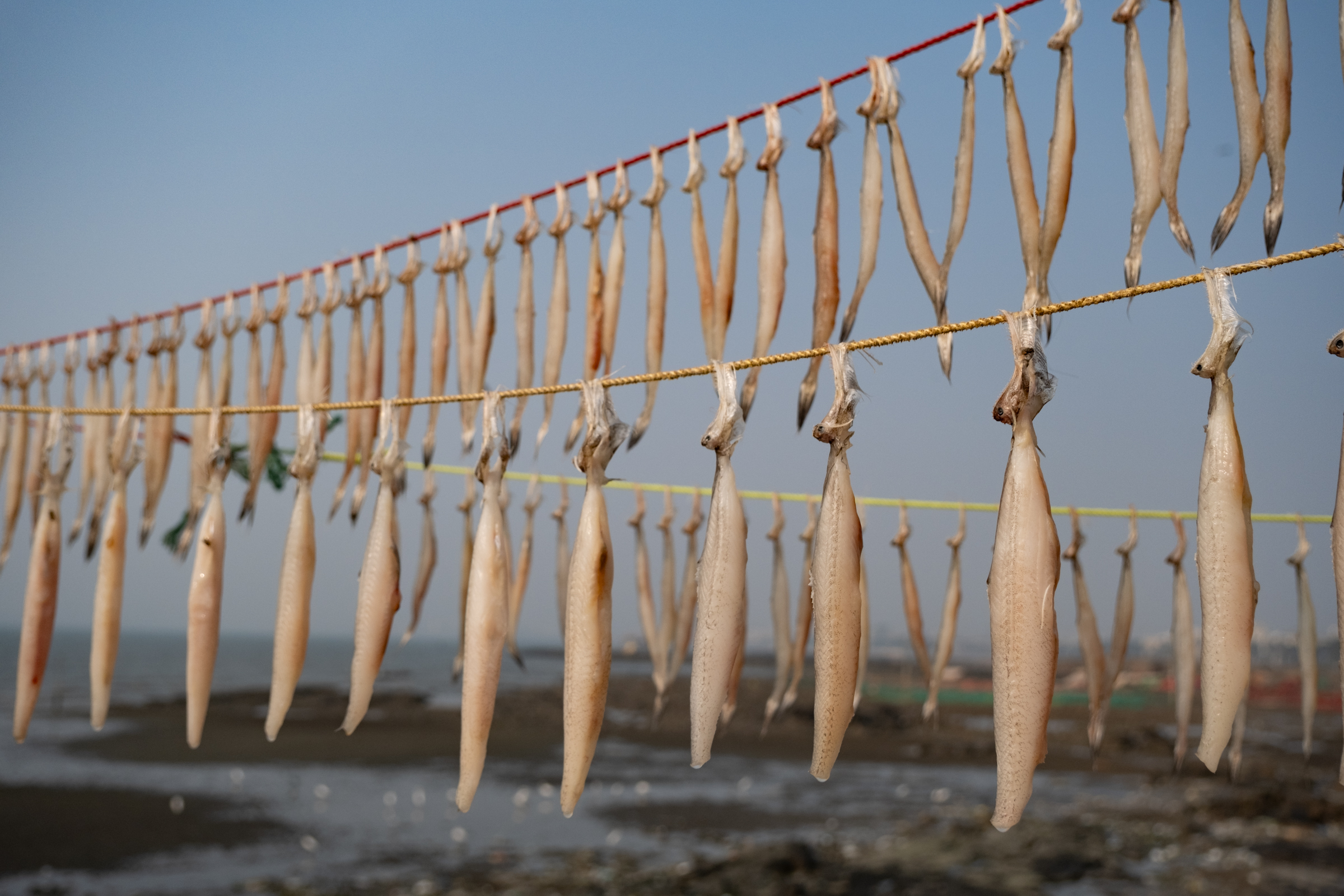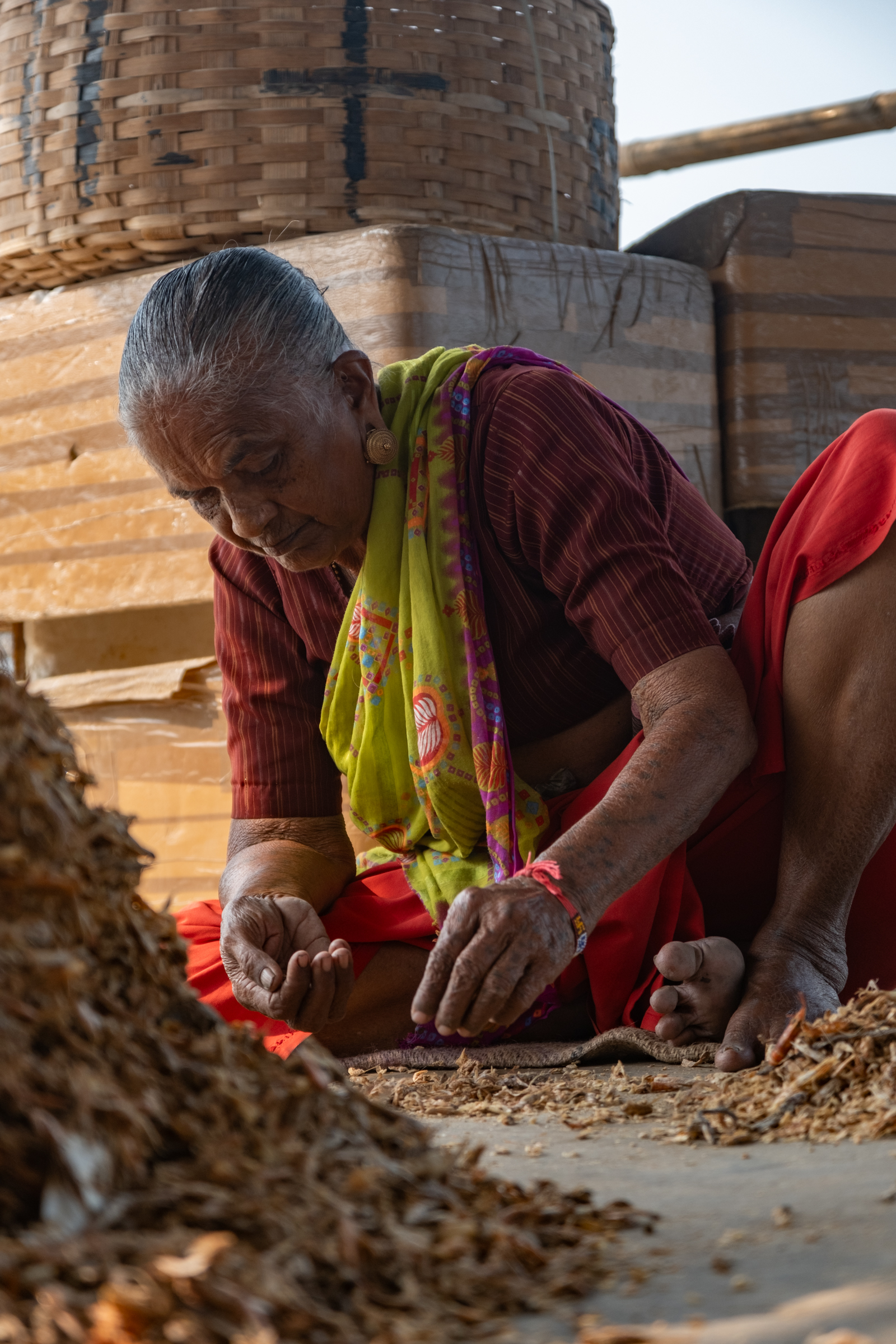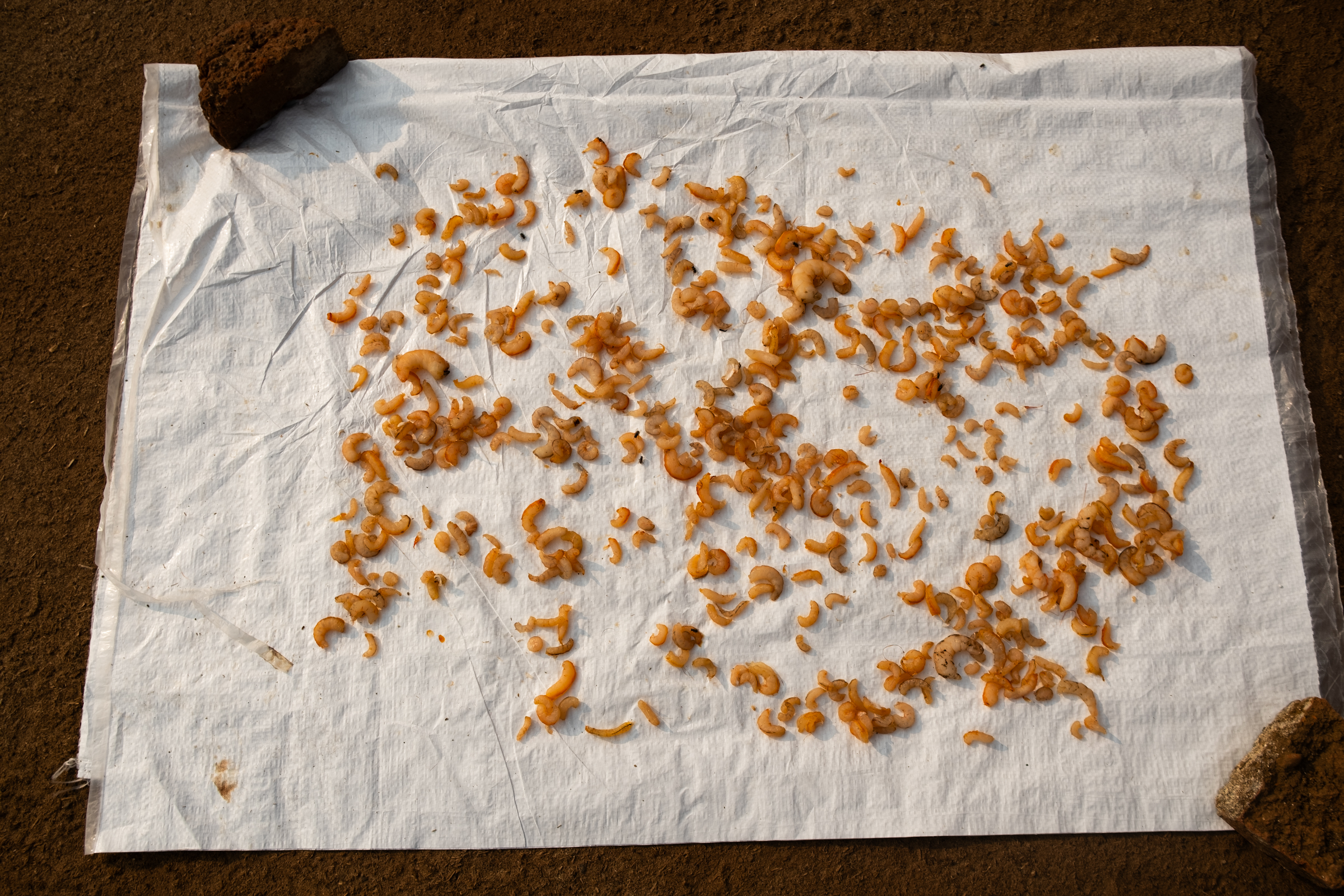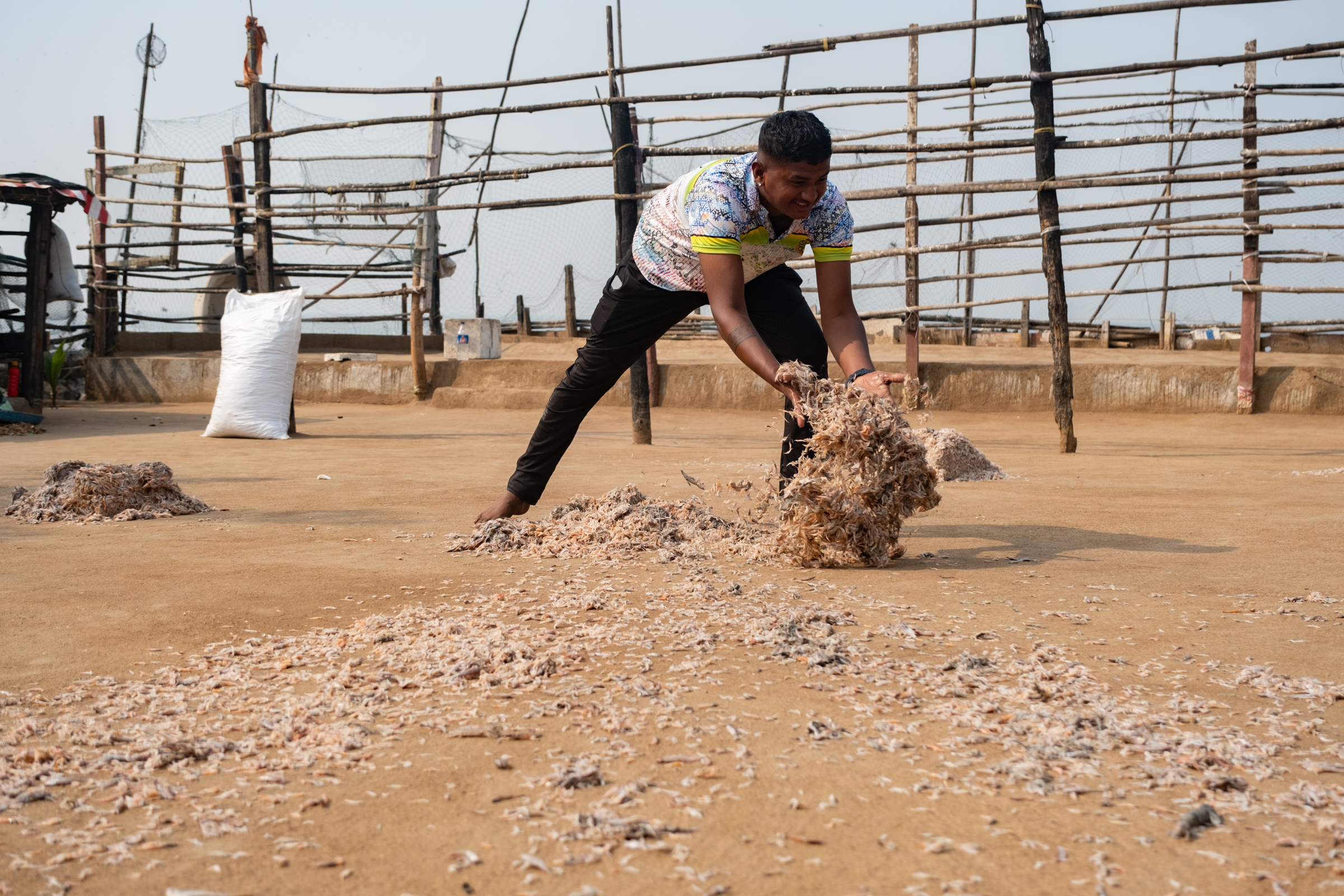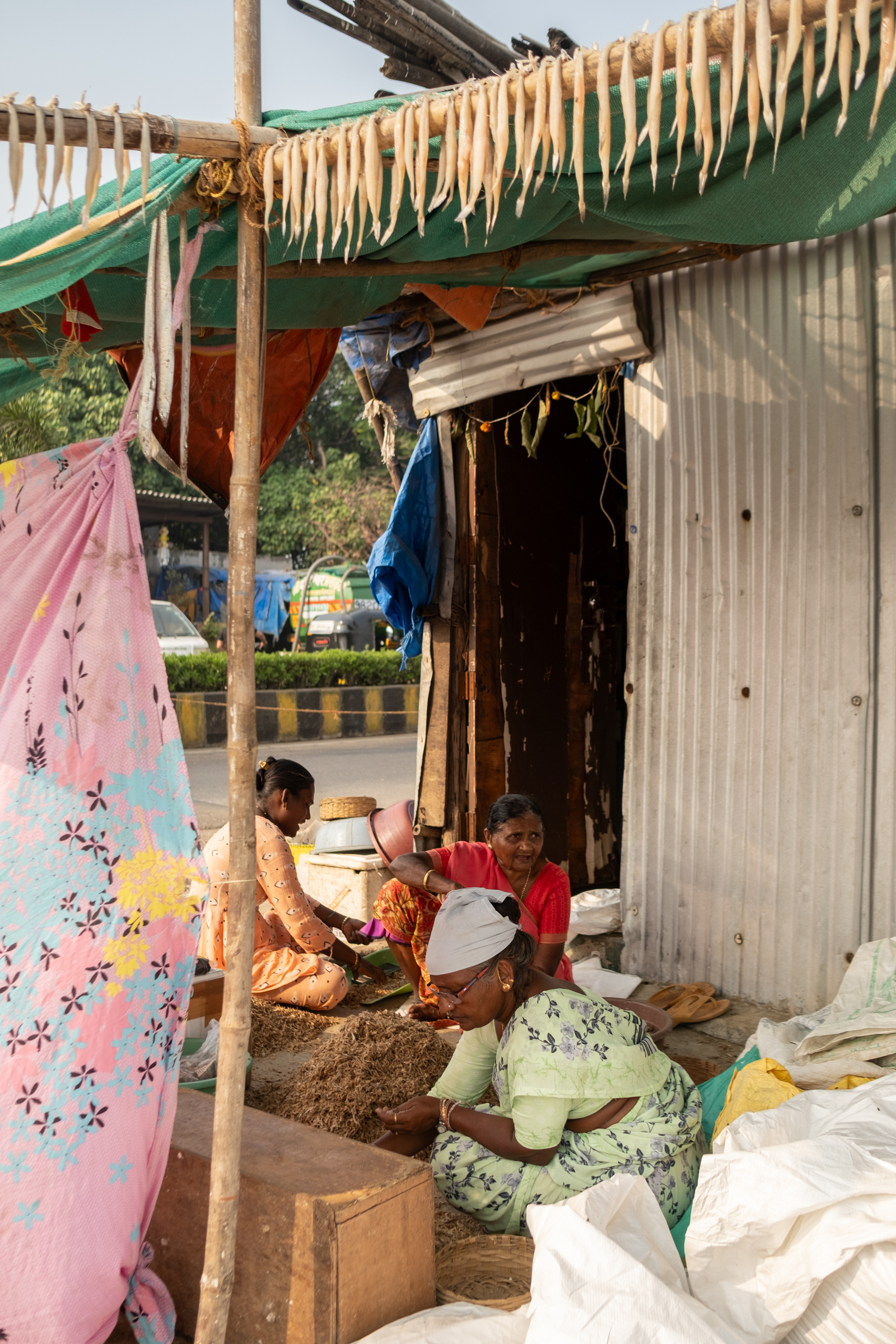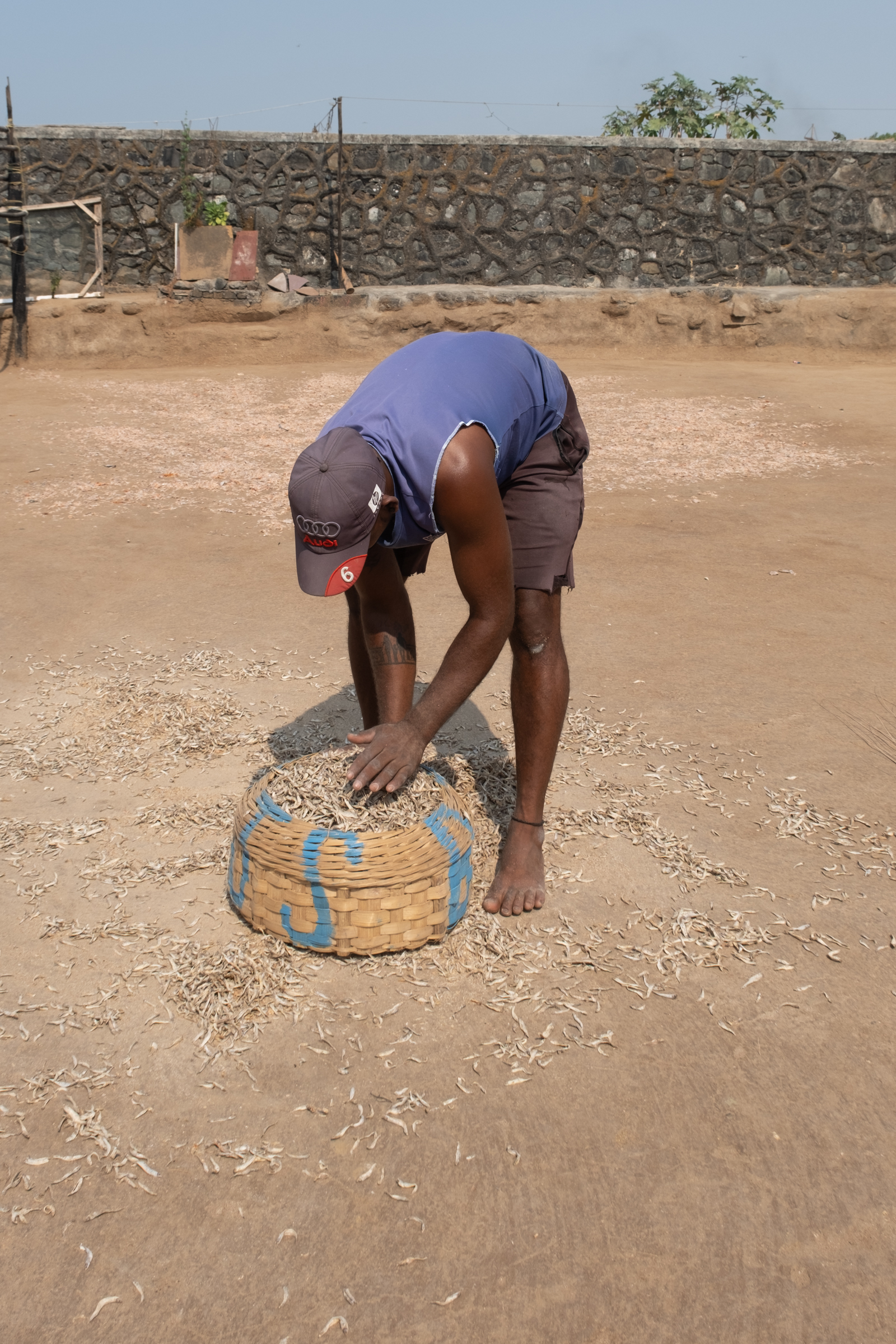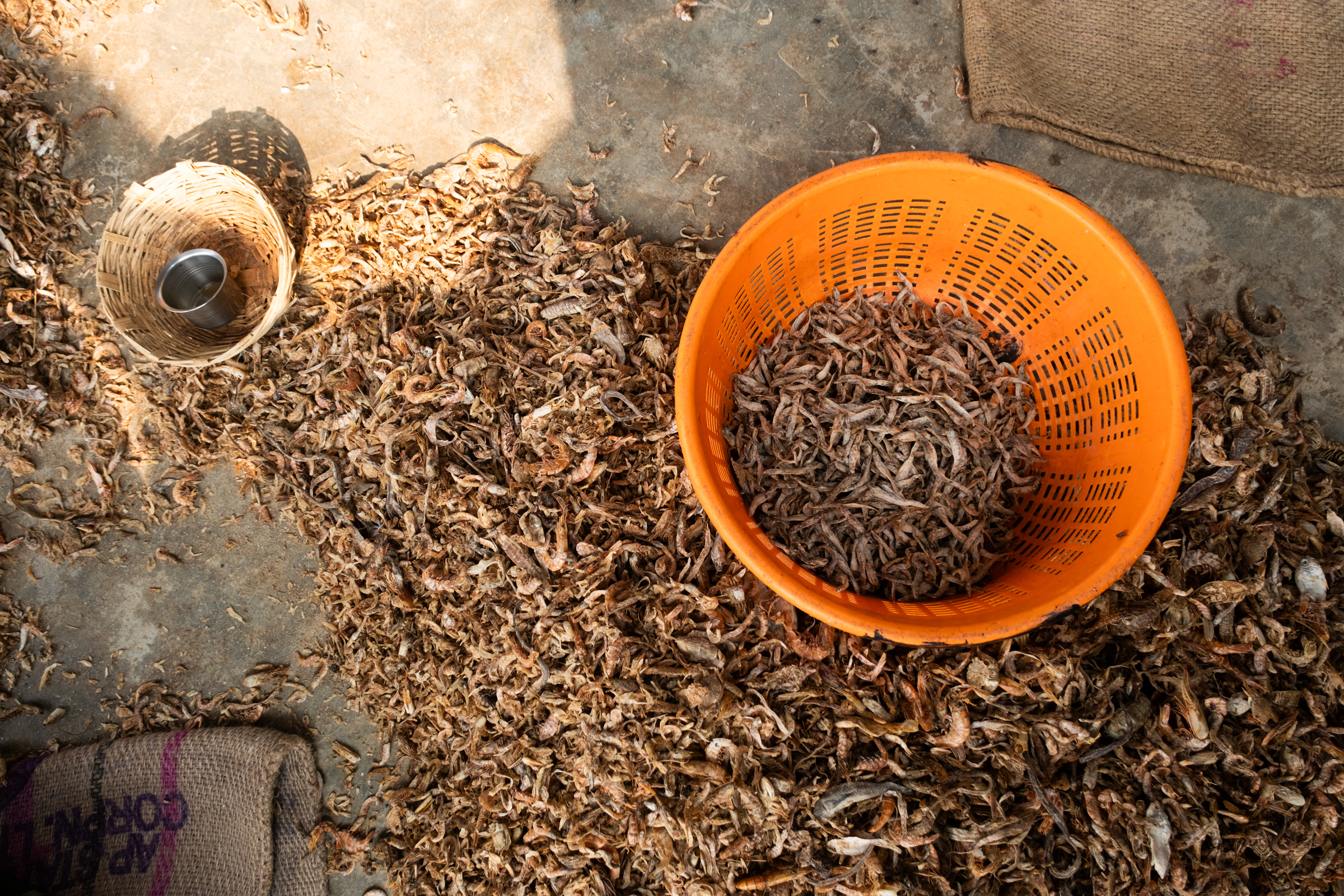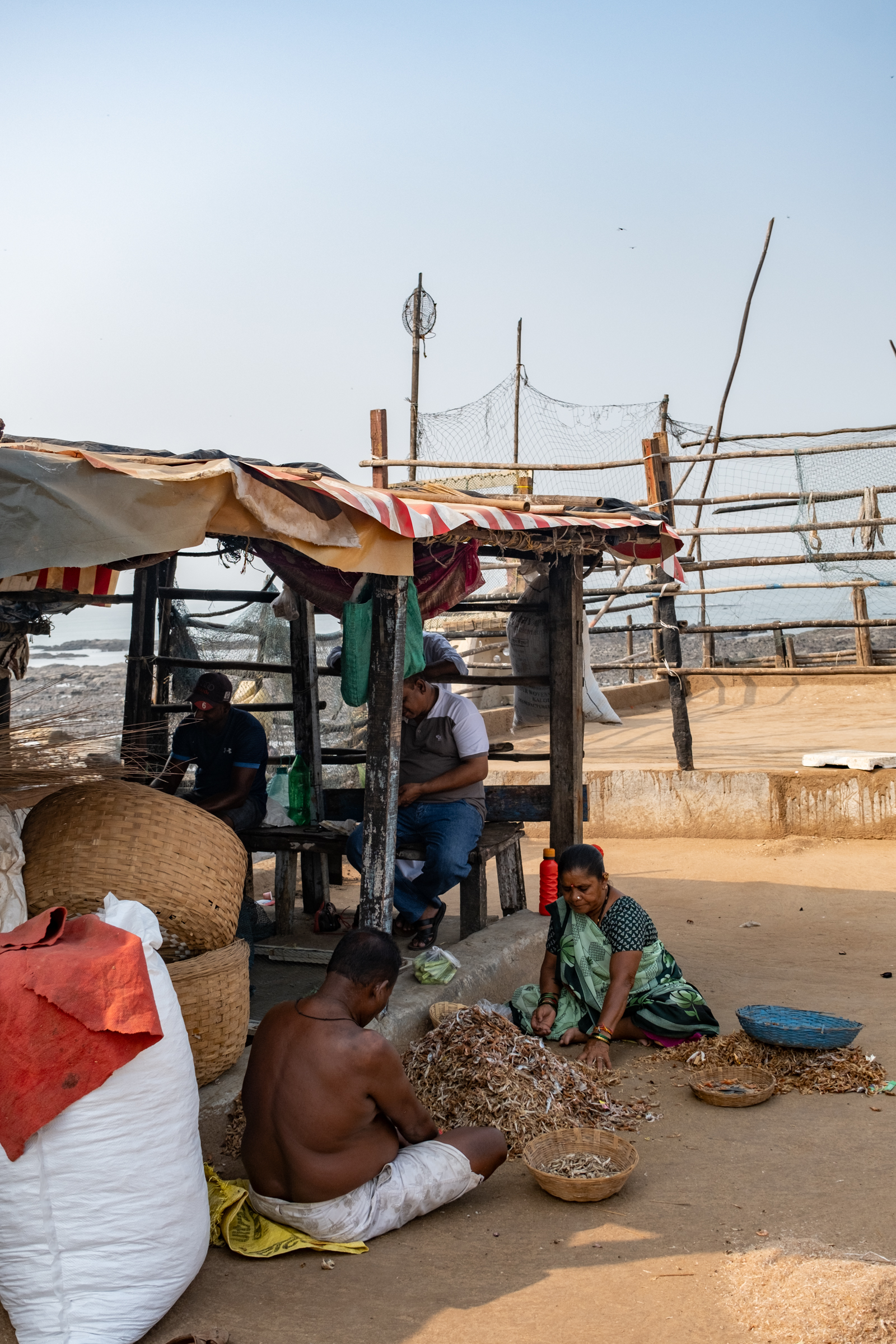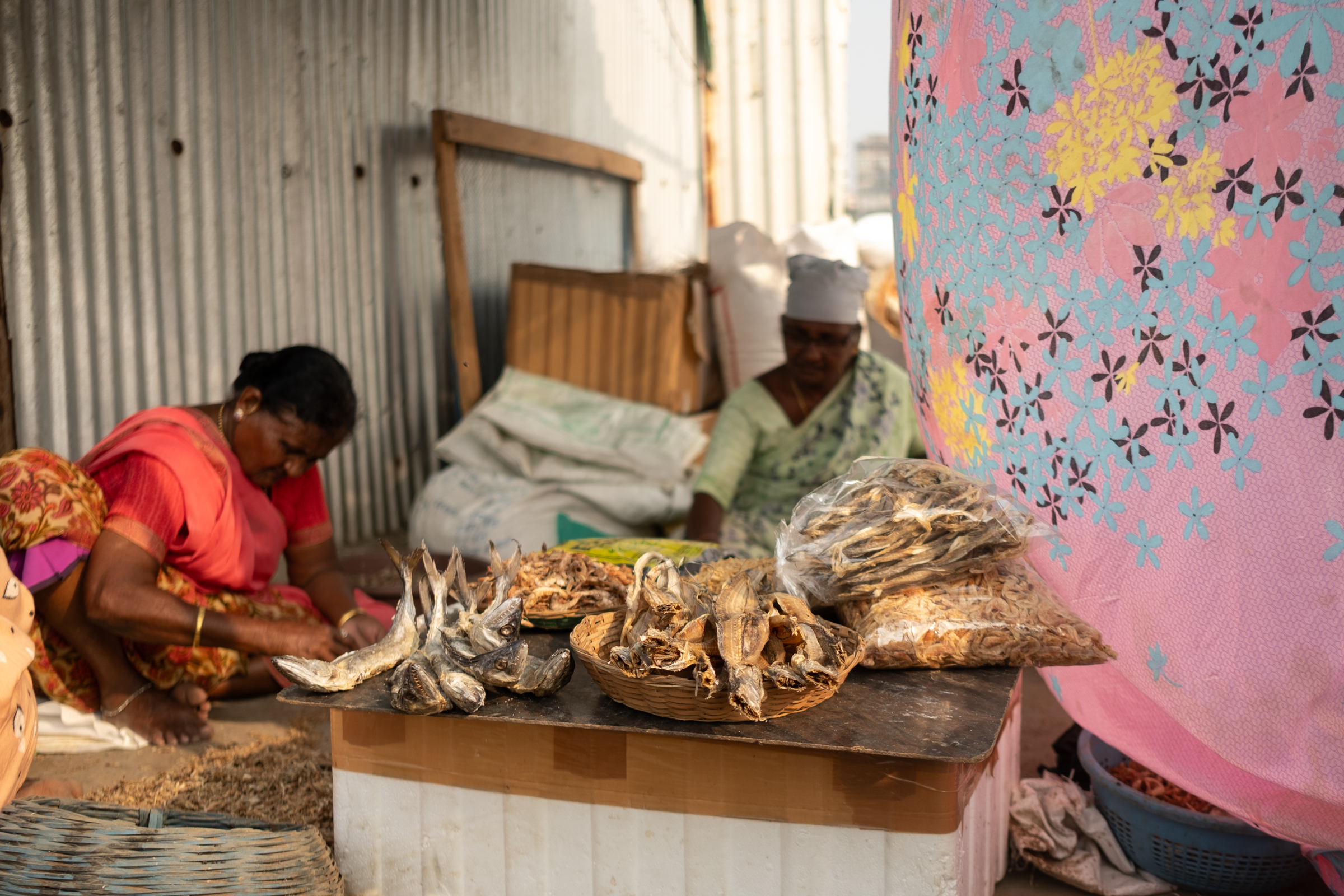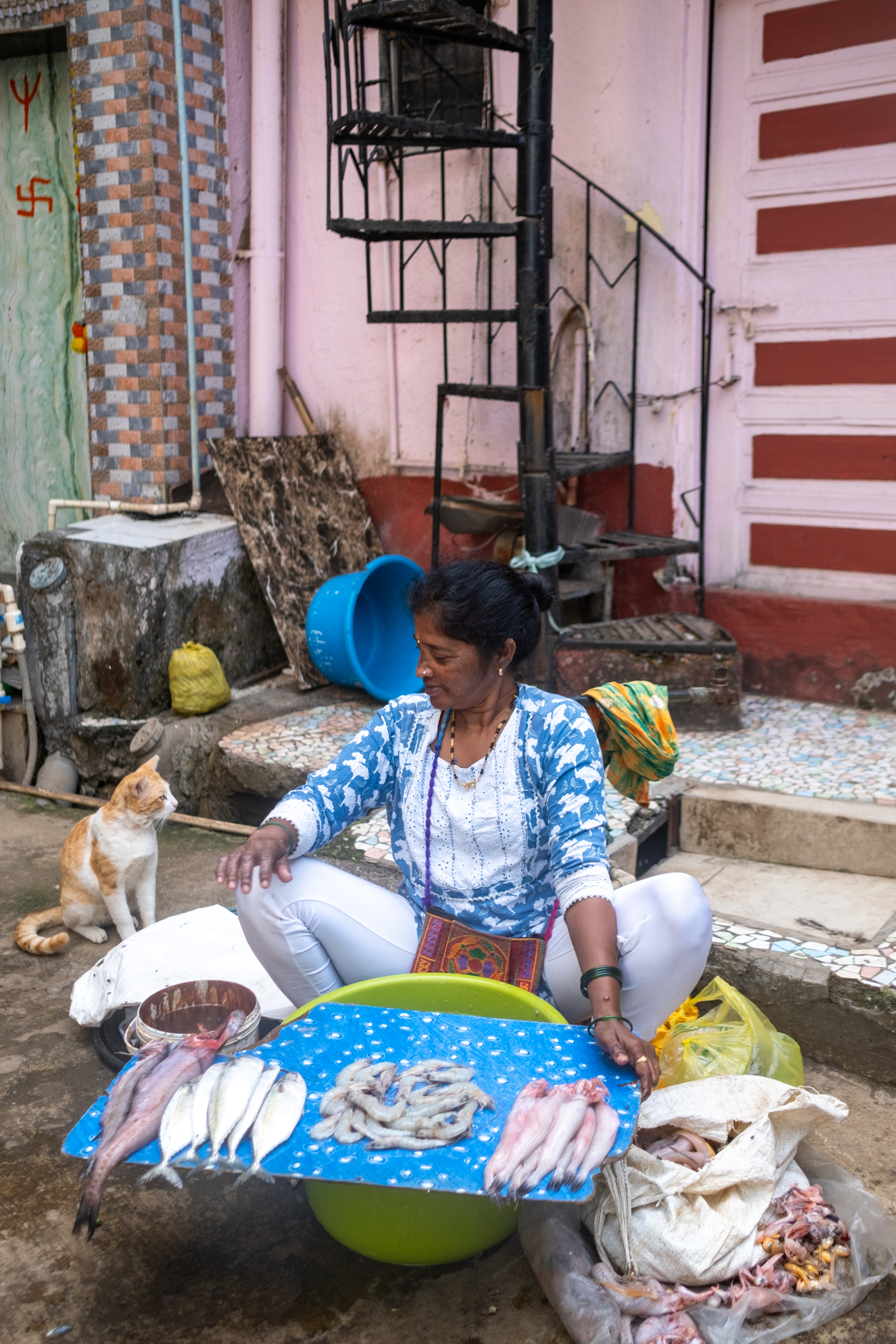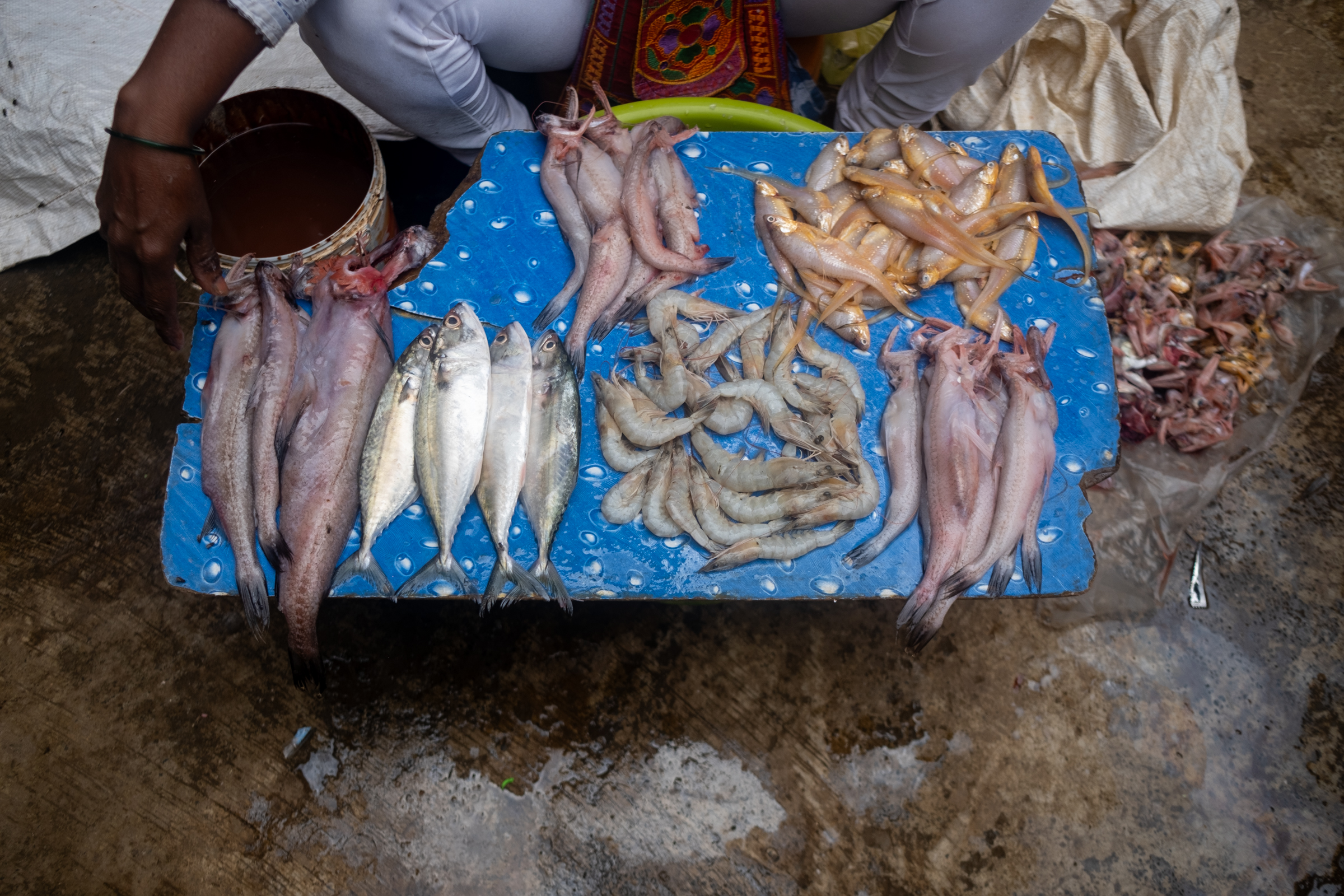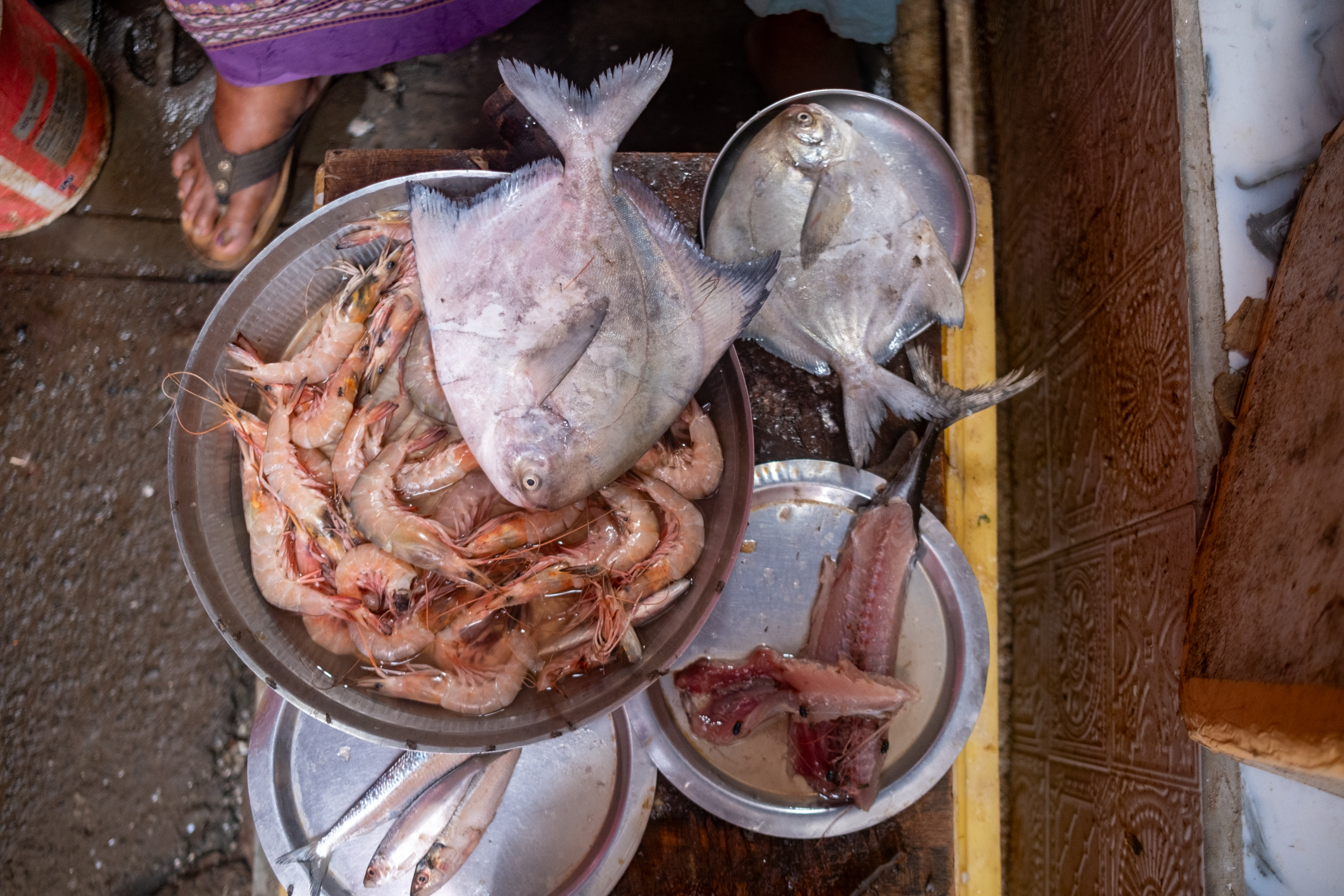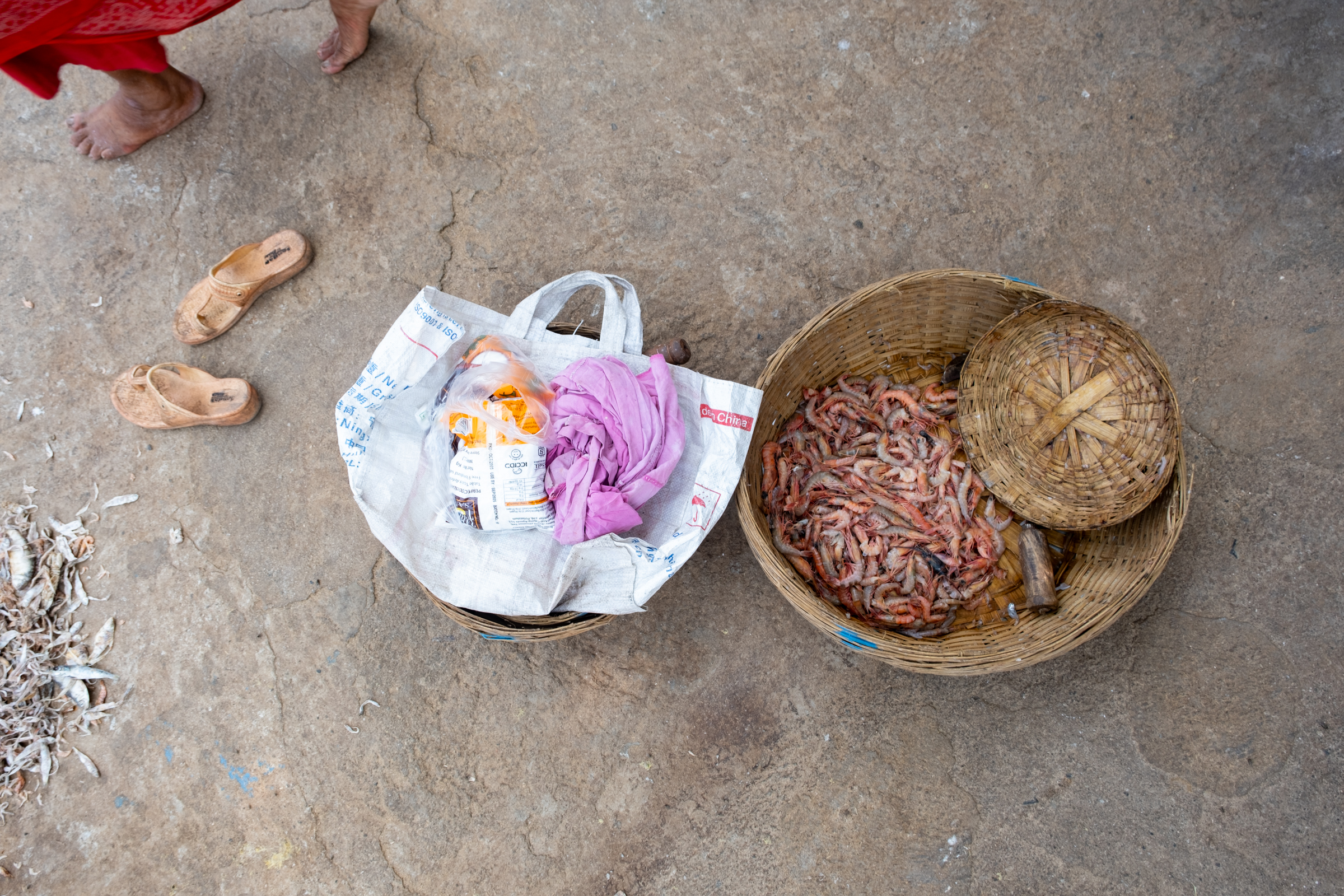Sustainable Traditions: Dried Fish Industry in Khar Danda Koliwada
Before Mumbai's expansion and subsequent merger into a single land mass, Bandra was part of Salsette Island. Bandra's strategic location along the coast of the Arabian Sea makes it an important trading hub. It is inhabited by various indigenous communities, including the Kolis, who are skilled fishermen and seafarers. Located north of Bandra is the village of Khar Danda. Danda is the name of the village, and Khar comes from khara, which means salty in Marathi. This is a remnant from a time when salt was mined from salt pans near the sea.
Khar Danda
Despite the urbanisation of much of the surrounding area, Khar Danda has retained its identity as a fishing village. The quaint village is home to the Koli community, who rely on fishing and related activities for their livelihood. From Danda dhakka (dock), hundreds of fishing boats venture out to sea at dawn. After a few hours, the boats return and offload the catch. Packed in ice, the catch is transported to wholesale markets, where it is sorted and distributed to fish vendors. The damaged and unsold fish are bought by Koli women to make dried fish, which is a valuable source of income for many Koli families. Though the supply is highly variable and seasonal, it is estimated that 10–20 percent of the total catch is dried.
Fish Waste
The fish is thoroughly cleaned and gutted to remove undesirable parts like fins, tails, bones, scales, and viscera. Instead of being discarded, fish waste is processed to produce fishmeal and fish oil, both of which have numerous industrial and agricultural applications. Fishmeal is a valuable source of protein and nutrients that is used in animal feed for livestock, poultry, and aquaculture. Fish oil is rich in omega-3 fatty acids and is used as a nutritional supplement in human diets, as well as in cosmetics, pharmaceuticals, and industrial products. Fish waste is also composted into khad (organic fertiliser) for use in agriculture and horticulture. Fish-based fertilisers are rich in nutrients such as nitrogen, phosphorus, and potassium, which promote plant growth and improve soil fertility.
Salting
For certain species of fish, an intermediary stage involves salting. Very lean and small fish are usually not salted but dried directly. Salting removes moisture from the innermost tissue and inhibits the growth of bacteria and fungi. For the best results, the salt should be clean and free from impurities or any form of contamination. The cleaned fish are immersed in a brine solution, which is typically made by dissolving salt in water. The brine helps draw moisture out of the fish and adds flavour. The concentration of the brine solution can vary depending on the type of fish and the desired level of saltiness. After brining, the fish are removed from the brine solution and salted either by dry salting or by layering the fish with salt. Dry salting involves sprinkling salt directly onto the surface of the fish, while layering involves alternating layers of fish and salt in a container or barrel. The salted fish are left to cure for 24 to 48 hours, depending on the size and thickness of the fish. During curing, the salt draws moisture out of the fish through osmosis, effectively dehydrating the flesh and preserving it. It is then washed in water and dried.
Drying Methods
The simplest method of drying is sun drying, suitable for the hot climate of Mumbai. The fish are spread evenly on the ground, which is specially coated with cow dung, which helps inhibit the growth of harmful bacteria and fungi. These are then left in the sun for several days, with the heat and airflow gradually removing moisture. Another popular method is air-drying, in which fish are strung together with twine and hung from hooks or lines. In Khar Danda, it is a common sight to see fish drying on lines, swaying gently in the breeze. The drying process may take several days or weeks, depending on factors such as temperature, humidity, and fish size. Winter is the best season for drying, with a high demand for dried fish and high-quality products. September to November are peak months for the dried fish trade, while February to May are low months.
Koli Cuisine
The Koli community, being closely associated with fishing, uses dried fish in their cuisine, particularly when the supply of fresh fish is low. Dried fish is a versatile ingredient that adds depth of flavour and nutritional value to traditional coastal dishes, reflecting the culinary heritage and cultural identity of the Koli people. Ground or powdered dried fish is often used as a condiment or seasoning to add umami flavour to dishes. Dried fish is also fermented to produce fish sauce, fish paste, or fish chutney. Fermented dried fish products are used as flavour enhancers and condiments in cooking, adding a salty, savoury taste to dishes.
The bombil, or Bombay duck, is the most well-known fish used in Koli cuisine. When dried, it has a strong odour, which gives it its unusual name. The Bombay Mail train, which carried mail, or daak, left a potent stink in its wake when it carried dried bombil from Mumbai to Kolkata. The fish was derisively called Bombay daak by the British, named after the train and its famed stink; however, the spelling was eventually altered to duck. As a dish, bombil is coated in spices and semolina or chickpea flour and shallow-fried until crispy. Bombil fry is a crispy snack or side dish served with rice or bread.
Among other dishes, sukat is prepared using jhinga (dried shrimp). Dried shrimp are seasoned with spices such as red chilli powder, turmeric, and garlic and then sautéed with onions, tomatoes, and coconut to make a flavourful and aromatic dish. Sukat is typically served with rice or as a side dish with curry.
Dried fish curry is another Koli dish prepared using dried fish and aromatic spices. The dried fish is rehydrated and cooked with onions, tomatoes, coconut milk, and a blend of spices, including coriander, cumin, and chilli powder. It is a spicy and aromatic dish, typically eaten with bread or rice.
Kismoor is a Konkani side dish made with dried fish, usually bangda (mackerel) or shrimp. The dried fish is shredded or flaked and mixed with grated coconut, chopped onions, green chillies, and spices such as turmeric and coriander. Kismoor is often served as a condiment or as an accompaniment to rice and curry.
Quality Control
Regardless of the drying method used, proper hygiene and sanitation practices are followed to ensure the safety and quality of the dried fish. Because dried fish is used as an ingredient in cooking, it is subject to quality control based on guidelines set by the Food Safety and Standards (Food Product Standards and Food Additives) Regulation, 2011. The Central Institute of Fisheries Technology (CIFT), an independent organisation founded by the Indian government to conduct research on fishing and fish processing in India, regularly evaluates the quality of dried fish and sets standards for quality control. Dried fish are checked for water retention (as excess water can cause fungus), and in the case of salted fish, for the percentage of salt content (not less than 12%).
Sustainability
The drying process is handled by Koli women, who, through their entrepreneurial skills, have transformed their work into a cooperative business. Repurposing fish waste into valuable products and resources has not only minimised waste generation, reduced environmental pollution, and created economic opportunities, but it has also contributed to a more sustainable and circular economy. The dried fish industry is a significant economic sector that supports the livelihoods of fishermen and fish vendors. It plays a vital role in Mumbai's culinary landscape and cultural heritage, reflecting the city's deep-rooted connections to the sea and its coastal traditions.
In Khar Danda Koliwada, it is common to see fish drying on lines, swaying gently in the breeze. The fish are strung together with twine and hung from hooks or lines.
Koli women get together to prepare, dry, sort, and package the fish at a designated location close to the coast. Open areas with plenty of sea breeze and sunlight are ideal for drying.
Drying fish is a task assigned to the girls and women in the family, and they start at a young age. Fishing and related activities form the economic backbone of Khar Danda Koliwada, providing livelihoods for the residents and contributing to the socio-economic development of the coastal village.
Men from the Koli community typically venture out to sea in traditional fishing boats to catch fish, shrimp, crabs, and other marine species. The damaged and unsold fish are bought by Koli women to make dried fish, which is a valuable source of income for many Koli families.
Dried fish retains much of its nutritional value, including protein and omega-3 fatty acids, which makes it a valuable low-cost nutrition source, particularly in regions where fresh fish may be unavailable or expensive.
The fish are spread evenly on the open ground, which is specially coated with cow dung. Cow dung contains antibacterial properties that help disinfect and sanitise surfaces. Coating floors with cow dung can help deter pests such as flies, mosquitoes, and ants, thereby reducing the risk of infestations and associated health hazards.
Winter is the ideal time of year to dry fish since there is a big market for high-quality dried fish. The dried fish trade peaks in September through November and is at its lowest in February through May.
Repurposing fish waste into valuable products and resources has not only minimised waste generation, reduced environmental pollution, and created economic opportunities—particularly for Koli women—but it has also contributed to a more sustainable and circular economy.
Dried fish is filtered to separate waste, which is collected and sold. Fish waste is composted into khad (organic fertiliser) for use in agriculture and horticulture. Fish-based fertilisers are rich in nutrients such as nitrogen, phosphorus, and potassium, which promote plant growth and improve soil fertility.
The sun-drying process may take several days or weeks, depending on factors such as temperature, humidity, and fish size. Regular dusting ensures the dried fish are evenly exposed to sunlight.
The simplest method of drying is sun drying, which is suitable considering Mumbai’s hot climate. After leaving the fish in the sun for several days, the heat and airflow gradually remove moisture. Once they are sufficiently dry, the fish are collected in baskets.
Bombay duck is one of the most popular fish used to make dried fish. Other species include ribbon fish (pictured here), also known as vaala or belt fish; mackerel, locally known as bangda; sardines, known as tarli or pedvey in Marathi; and prawns, known as jhinga.
Due to the stench emitted in the fish drying process, drying areas are typically situated on the coastline, a little distance away from settlements.
The summer months of March to May mark another peak fishing season in Mumbai, especially for catching species like shrimp and prawns. As sea temperatures rise, these crustaceans become more active, attracting fishermen to coastal waters and estuaries where they are commonly found.
The post-monsoon period from October to December is considered one of the peak fishing seasons in Mumbai. As the weather stabilises and sea conditions improve, fishermen resume their fishing activities. This period is particularly favourable for catching species such as pomfret (paplet), prawns, and crabs. Though the supply of fish is highly variable and seasonal, it is estimated that 10–20 percent of the total catch is used for drying.
Dried fish may be packaged in plastic bags or pouches with airtight seals to protect them from moisture and contaminants. Processed fish products are sold to wholesalers or exported to other regions.
Koli women purchase fresh catch from fishermen, either directly from the docks or at fish auctions, and sell it in local markets, door-to-door, or to wholesale buyers. Wholesale fish markets play a crucial role in the supply chain, connecting fishermen with retailers, restaurants, and consumers throughout Mumbai and beyond.
Before they are sold, fish are thoroughly cleaned and gutted to remove undesirable parts like fins, tails, bones, scales, and viscera. Instead of being discarded, fish waste is processed to produce fishmeal and fish oil, both of which have numerous industrial and agricultural applications. Fishmeal is a valuable source of protein and nutrients used in animal feeds for livestock, poultry, and aquaculture.
In addition to selling fresh fish, Koli women may engage in fish processing activities such as drying, smoking, salting, or pickling fish to extend its shelf life. Koli women exhibit resilience and entrepreneurship, engaging in diverse activities within the fishing and seafood trade sector to support themselves and their families.
Due to its high demand and limited supply, pomfret (paplet) is typically the priciest fish available for purchase. Pomfret typically live in deeper waters, which makes them more difficult to catch and accounts for their higher price.
From the moment they are offloaded, fish can be kept fresh with the use of ice. Ice factories, typically found near the fish market, regularly manufacture large amounts of ice for commercial use.
Fish is preserved in ice to keep it fresh during storage and shipping. Fish kept in an ice-filled container helps maintain freshness and quality by delaying spoiling and bacterial growth.
Some Koli fisherwomen engage in door-to-door sales, walking through neighbourhoods with baskets of fresh fish to sell to residents. This direct approach allows them to reach customers who may not be able to visit the local fish market.
Local fishermen catch a variety of prawn species off the coast of Mumbai. Whiteleg prawn (king prawn), black tiger shrimp, different species of Solenocera or pink shrimp (seen here), green tiger prawn, and greasyback shrimp are among them.
